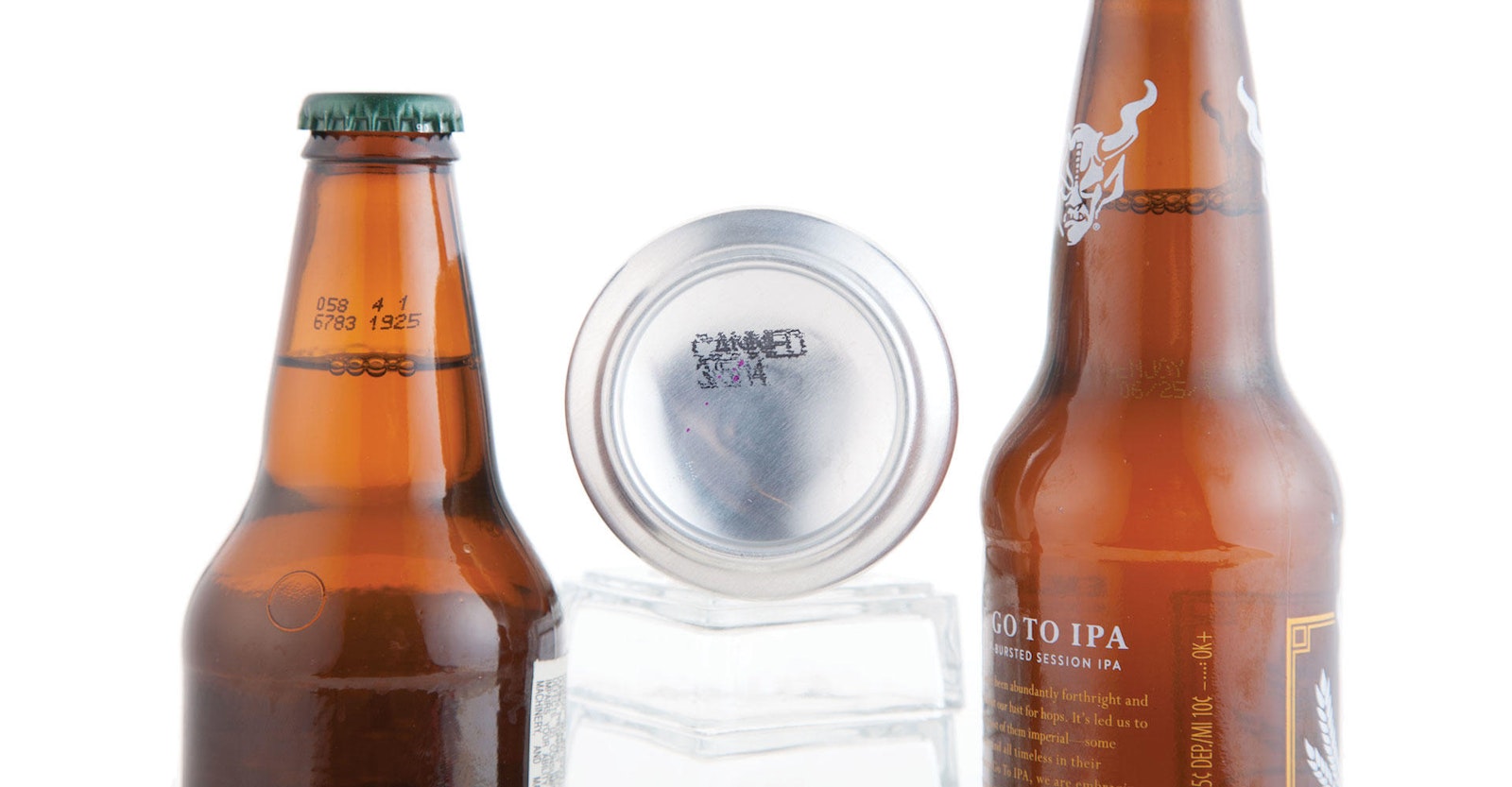While the rapid growth of craft beer has created a dynamic and constantly evolving marketplace with beers rotating faster than ever on store shelves, in some retail shops, beers still have a tendency to sit on shelves past their prime. Freshness should be forefront in the mind of any craft-beer consumer buying hops-forward beers, since that’s the way the brewer intends for you to taste it.
To help ensure a consistent experience for all consumers within their distribution footprint, some breweries use date codes. But, because there are no standards or requirements for indicating beer age, each brewery employs its own method for dating its beers. (Regrettably, a large number of breweries don’t offer any date stamps whatsoever, leaving you in the dark about the freshness of their products.)
Finding the Date Code
One of the most difficult tasks in checking beer freshness is locating the date code. First, check the label. Breweries such as Sierra Nevada, Great Divide, and Odell clearly print the date code on a specific section of the label, which is often the same for all product lines. If you can’t find the code on the label, check the bottle or can. For bottles, date codes are often printed on the neck or shoulder (the section just above the label). These codes are easiest to identify when they are printed in yellow or white ink on the bottle, but black or dark ink is not uncommon, so hold the bottle up to a light source to help you find the code.
On cans, most date codes are printed on the bottom—and in the case of Oskar Blues, there’s even a special phrase or witty message. If you can’t find a code printed on the label or anywhere else on the bottle/can, the last resort is to check the carrier or case packaging. Some breweries elect to print their date codes on the four-pack or six-pack carriers or on the case carton. If you’re still unable to find any freshness information after checking the label, bottle/can, carrier, and case carton, it is likely that there is no date code, so you’ll have to take your chances and hope that you are purchasing fresh beer. You can increase your odds by purchasing from stores that you know make an effort to stock fresh beer and stores that go through product reasonably fast.
Reading the Date Code
Often, deciphering the date code can prove more difficult than locating it. The two most common types of date codes are packaging dates and shelf-life dates.
_Packaging dates _indicate when the beer was bottled or canned and can be identified by the terms “bottled on,” “canned on,” “packaged on,” or “filled on.” Packaging codes that are more discretely stamped without those identifiers can be somewhat difficult to read because they often take the form of Julian dates (a number between 001 and 366) embedded in a longer date code. These complex codes can vary greatly from brewery to brewery and may include the year, date, time, and sometimes even the tank or batch number. To determine which part of the code refers to the date, your best bet is to check a resource such as Fresh Beer Only. Patrick St-Amand, the creator of Fresh Beer Only, has compiled an extensive list of the date stamping practices of U.S., Canadian, and international breweries that should be a bookmark on every craft-beer shopper’s smartphone.
_Shelf-life dates _indicate the date by which you should consume a beer, as determined by the brewery. These dates can be identified by several different terms, including “best before/by,” “enjoy by,” “consume by,” “drink by,” or “sell by.” For most beers, this date is 60–120 days after packaging and can vary based on the style. These dates can also be referred to as pull dates because many breweries request that distributors and retailers pull beers from shelves and inventory if they are past the printed shelf-life date. Some breweries, including Firestone Walker and Stone, even have forms on their website for reporting expired beer.

Although the process of checking beer freshness can seem daunting at first, it will soon become a habitual, almost instinctive, practice when you shop for beer after you realize the impact it can have on your experience. Craft brewers go to painstaking lengths to create a product for you to enjoy, and you owe it to them—and to yourself—to ensure that you experience it the way they intended.

